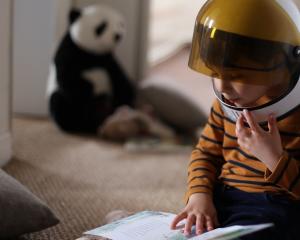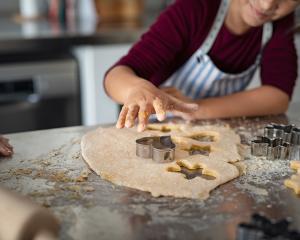
It’s through this latter sense that most of the initial learning takes place. For the first week their focus is about the distance between their face and yours when you’re feeding. So don’t be worried about "getting in their face" when talking to them.

For the first month, until babies have both eyes working together, their vision is only two-dimensional. For this reason, large, bold shapes in the strong colours of red, yellow, blue and even black will attract their attention. Their eyes will wander around the edges of the shapes where the colours meet.
Our little grandson has curtains like this in his room and is positioned where he can lie and see them. He spends a lot of time apparently passively looking but his little brain is working overtime, taking the patterns in and making sense of them.
Similarly, you might notice that a newborn tends to look around your face for a start rather than into the middle where your eyes and nose are.
It’s the edges where the difference between light and dark is and the shape of your head that are first attracting his attention. That’s why variously shaped and brightly coloured mobiles hanging above the bed provide interest.
The next stage is to explore what is within the bold shapes as their eyes focus together and the brain is ready to process more complex information.
For example, on our newborn’s curtains there are simple cat faces, teddy bears and flowers.
You will notice that babies will now always be attracted to a person’s face and particularly their eyes. They then find the nose and mouth and get intrigued by facial movements.
There’s a fascination with the changing shape of the mouth as you talk and pull faces, a tongue poking out and in, nose wriggling, eyes opening wide and screwing up closed and eyebrows going up and down.
Babies usually mimic facial movement first so note any similar response. That’s a milestone and it shows that the little brain has been beavering away.
Quite soon they will start following movement when something directly in front of them is moved slowly off to one side.
Use your hand or something of interest and slowly move it from the centre off to one side and back across to the other, preferably to the left and across to the right and back to the left.
This is a great brain workout in preparation for the mechanics of reading. But don’t push it, remember that baby’s attention span is very short.












